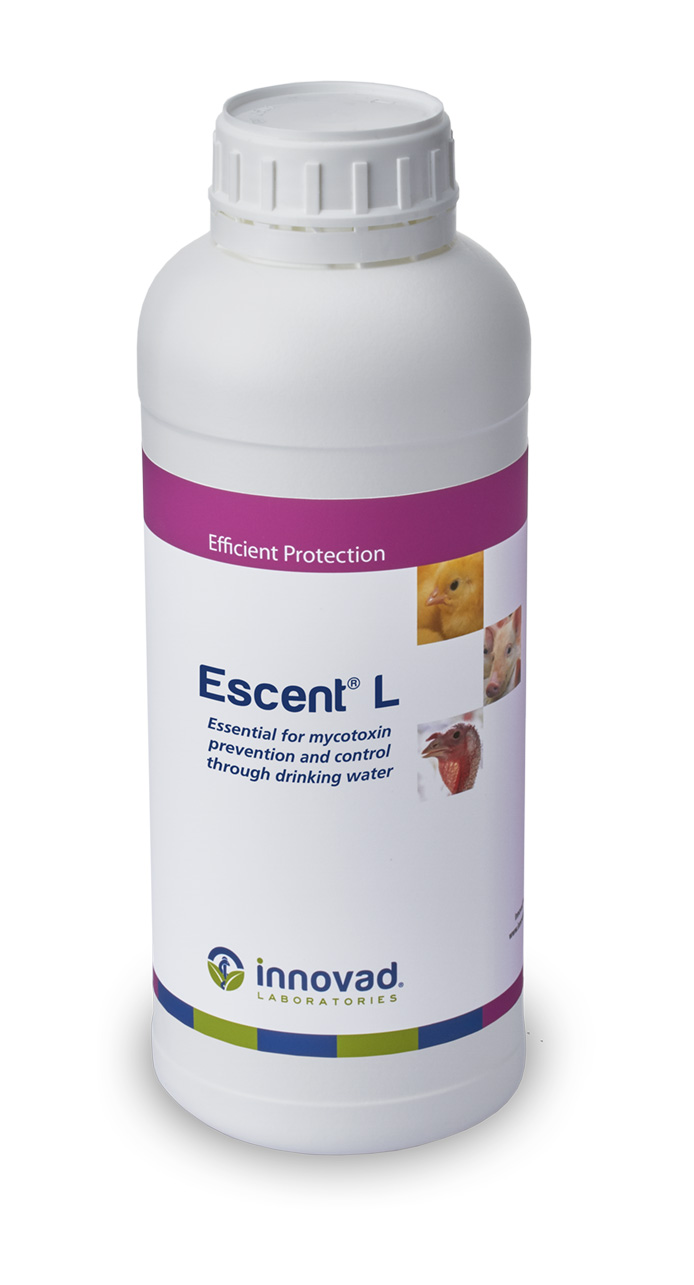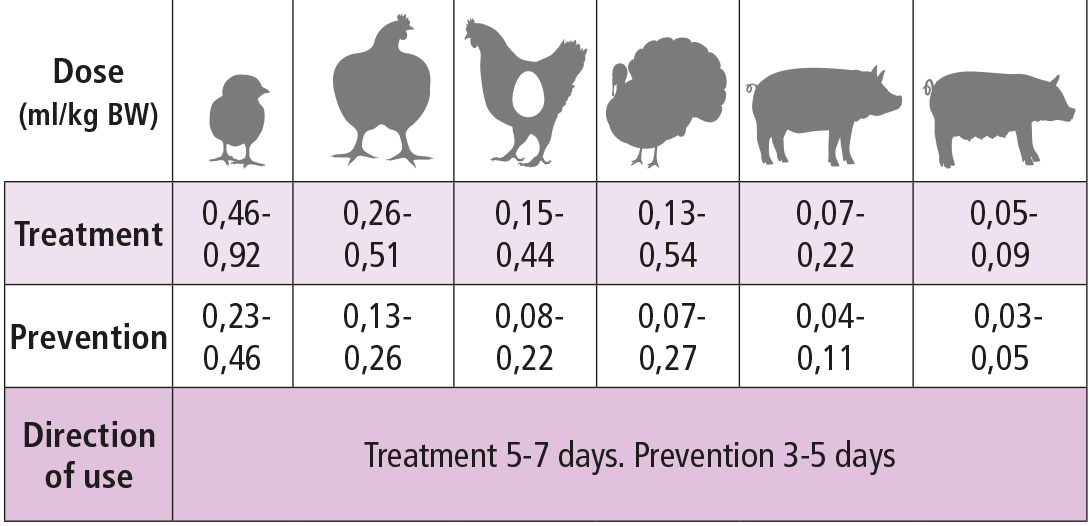Efficient Protection
Escent® L
Easy and essential for mycotoxin control, support and prevention
Stress is dynamic, complex
In commercial poultry production, increasing resilience has been achieved through breed selection (genetic improvement) and nutritional optimization as well as the use of feed additives in order to improve performance and health. In poultry management, stress factors such as handling, sudden environmental changes and vaccine
and disease challenges are minimized. Any treatment that prevents or minimizes stress translates into growth promotion. Animals possess a limited natural resistance and immunity against colonization or infection by potentially pathogenic micro-organisms or other toxic components.
Sources of stress
1. Multiple mycotoxins, hidden toxins
and undetected endotoxins
Mycotoxins decrease the function of organs such as the liver and kidneys.
2. Old and emerging diseases
Diseases are major concerns within intensive animal production. Mycotoxins have a significant negative impact on the poultry defense mechanism and immune system.
3. Enteric diseases: Bacterial enteritis – dysbacteriosis
The mycotoxin deoxynivalenol predisposes for the development of necrotic enteritis in broilers. Subclinical necrotic enteritis (NE) is an economically important enteric disease caused by Gram-positive, anaerobic bacterium, Clostridium perfringens.
4. Oxidative stress
Considering that mycotoxins are among the stress factors that have a negative effect on pro and antioxidant balance in the body and especially in the cell, reactive oxygen species can get out of balance. This may lead to a situation whereby the bird is no longer able to quickly detoxify these products, leading to oxidative stress. Such a wide spectrum of challenges requires a combined approach to maintain and improve the overall production condition.
The fusarium mycotoxin, deoxynivalenol (DON), is a common feed contaminant that may damage intestinal epithelial cells and/or their intercellular junctions, subsequently inducing protein leakage (Girish and Smith, 2008). Consequently it may predispose to the development of NE.

Especially designed product for drinking water application, which is synonym for flexibility, efficiency and profitability, and has a very wide action radius.
Escent® L reduces and overcomes stress induced health problems related to the following product features:
- Diuretic effect
- Liver tonic, enhancing excretion of harmful metabolites
- Detoxifier power
- Immune response support
- Water intake improver
Escent® L is a liquid anti-stress solution for mycotoxin control and animal revitalization that is innovative and combines yeast extracts, yeast fermentation products (Saccharomyces cervisiae) with bioactive contents, chelators, energy sources, minerals, botanicals and organic acids. It ensures a critical supply of nutrients and supportive molecules to counteract the negative impact of feed refusal on metabolism and microflora.
Apart from being safe for the user, the animal, the equipment and the environment, Escent® L is a non-corrosive, organic, bio-degradable, stable and water soluble suspension. This liquid application is ideal in situations in which stressed animals reduce their feed intake but continue to drink.
Escent® L use: Treatment can be started for all clinical cases of mycotoxicosis and the prevention thereof, as well as in circumstances of stress, severe disease conditions, immune-suppression or whenever animal performance is reduced.
Escent® L benefits:
- Provides fermentation extract which is known for its wide range of highly beneficial and readily bio-available nutrients (vitamins, minerals, amino acids, energy).
- Provides excellent media for beneficial bacterial growth.
- Vitalizes damaged organs such as the liver and kidneys.
- Maintains lower pH in the guts (acidification).
- Helps to exacerbate proper fermentation
and eliminates toxins of the guts mal-fermentation. - Detoxifies mycotoxins by Biotransformation and Caption (wide spectrum and highly efficient in acid media).
- Reduces immune suppression.
- Enhances animal disease resistance and defense system.
- Reduces negative effect of oxidative stress.
- Reduces convalescence.
- Improves overall performance under healthy or diseased conditions in terms of FCR, homogeneity and production index.

Dosage and application

